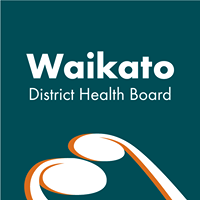Media information
For immediate release
Date: 9 December 2009
Waikato Shallow Lakes Cyanobacterial Warning Update
Two further lakes now have health warnings
As anticipated, testing late last month has confirmed that cyanobacterial cell counts have risen in Lakes Kainui and Ngaroto.
As of this month, Lakes Waahi, Waikare, Kainui and Ngaroto now all have health warnings in place due the presence of high cyanobacterial numbers.
This summer, Environment Waikato has tested Lake Puketirini in both October and November. No cyanobacterial cells were present on either occasion.
This lake, which was formerly a mine, is very deep and its water is likely to be of better quality for recreational use than the shallow lakes.
"Cell counts will most likely be rising in all shallow lakes as summer progresses," said Waikato District Health Board medical officer of health Dell Hood
"Waikato shallow lake users should always avoid contact with water which looks cloudy green or brown, or has scum forming even when there is no warning in place.
"Most lakes are not tested, and cell counts are likely to be rising in all of them as summer arrives.
Dr Hood reminds the public that test results should be used for general guidance only, as cyanobacteria and their toxins will not be evenly spread through any lake and may be concentrated in some areas by wind and water movements.
"During blooms, lakes should not be used for any activity which involves skin contact with the water," she said.
"If people choose to do this, they should shower and change their clothing as soon as possible afterwards, even if no symptoms are noticeable."
Swallowing water from lakes affected by blooms should also be avoided.
While not everyone will be affected, for some, the risks include rash, skin and eye irritation, allergy symptoms such as hayfever and asthma and possibly stomach upsets such as diarrhoea and vomiting.
These effects may not appear until some time after contact with the affected water.
The Waikato DHB Population Health Service would like to be informed about health problems which develop after exposure to any of the Waikato lakes.
This allows recording of location, time, the activity taking place and length of time the problem lasted. Follow up testing may be done, depending on the situation.
"Up-to-date information on cyanobacterial cell counts is available from local councils and Environment Waikato. The Environment Waikato website
http://www.ew.govt.nz/Environmental-information/Rivers-lakes-and-wetlands/healthyrivers/Waikato-River/Algal-Blooms-in-the-Waikato-region/#Heading4 also has up to date results.
Health advice is available from Population Health (07) 839 8899 in and out of hours.
ENDS



 Gordon Campbell: On Iran Killing Its Rappers, And Searching For The Invisible Dr. Reti
Gordon Campbell: On Iran Killing Its Rappers, And Searching For The Invisible Dr. Reti Labour Party: National Should Heed Tribunal Warning And Scrap Coalition Commitment With ACT
Labour Party: National Should Heed Tribunal Warning And Scrap Coalition Commitment With ACT Government: Saves Access To Medicines
Government: Saves Access To Medicines Office of the Speaker: Law And Order, Finance, And Defence A Focus For Ukrainian Parliamentary Delegation To NZ
Office of the Speaker: Law And Order, Finance, And Defence A Focus For Ukrainian Parliamentary Delegation To NZ Environmental Defence Society: Fast-track Approvals Bill Presents A Serious Risk To New Zealand Exporters
Environmental Defence Society: Fast-track Approvals Bill Presents A Serious Risk To New Zealand Exporters NZ Government: New Lab To Help Protect Key Pacific Tuna Fisheries
NZ Government: New Lab To Help Protect Key Pacific Tuna Fisheries Susan Botting - Local Democracy Reporter: Ruawai Leader Slams Kaipara Council In Battle Over $400k Property
Susan Botting - Local Democracy Reporter: Ruawai Leader Slams Kaipara Council In Battle Over $400k Property


